
Photographer recounts historic moments
By John Gregory
Ralph LoVuolo, a former Scripps Ranch News photographer and past Scripps Ranch resident, was on the scene during the July 13 political rally in Butler, Penn., when a gunman attempted to assassinate former president Donald Trump, the Republican U.S. presidential nominee.
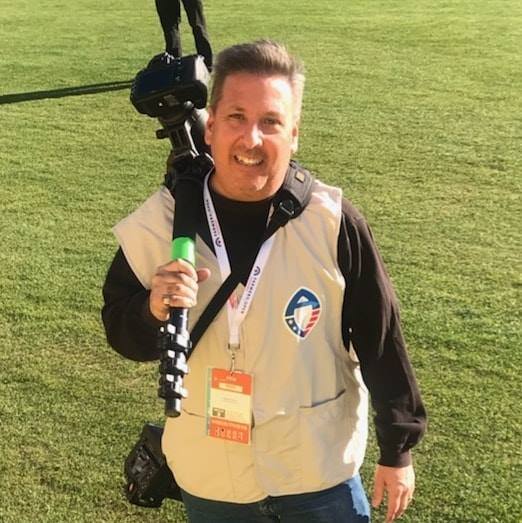
LoVuolo moved from Scripps Ranch to Pennsylvania in 2020 to be close to his daughter who was attending Penn State. He began accepting a few assignments each month for the Butler Eagle, a daily newspaper in Pennsylvania. He was assigned to take crowd photos at the July 13 rally. Another Butler Eagle photographer was assigned to take photos of Trump. But, as fate would have it, LoVuolo’s news instincts took over and he leapt into action shortly after the first shots rang out.
The NBC News national network reported that four photographers from big name media companies (NY Times, Getty Images, Washington Post and the Associated Press) took historic photos of the event. The truth is that photographers from many other media outlets were also taking photos, including LoVuolo – and LoVuolo captured action photos as good as any. But, being at the right place at the right time was not exactly what he had in mind in this instance, LoVuolo said.
“With all the photography that I do, you never think that you’re going to put yourself in a position where your life is going to be in danger,” he said.
LoVuolo began the day shooting a car show. He then arrived at Butler Farms, a big dairy showground where the Trump rally was scheduled.
“I really didn’t think at this political event that there would be bullets flying. … It was pretty surreal,” he said.”
LoVuolo said he didn’t have to get Secret Service or FBI clearance to photograph the rally, but the newspaper had to register with “the Trump people” in order to gain access. Still, no background check was required.
He carried two cameras, one with a lens for close-ups and one with a longer lens.
LoVuolo was allowed into the media area, which was surrounded by a fence. There was a raised platform for TV camera crews, but he was on the ground level. He was about 75 to 100 feet from the stage.
Some hostile Trump supporters were chanting against the mainstream media outside the media fence, LoVuolo said. The atmosphere was charged, and some people were standing in fields within the security perimeter of the rally, he said.
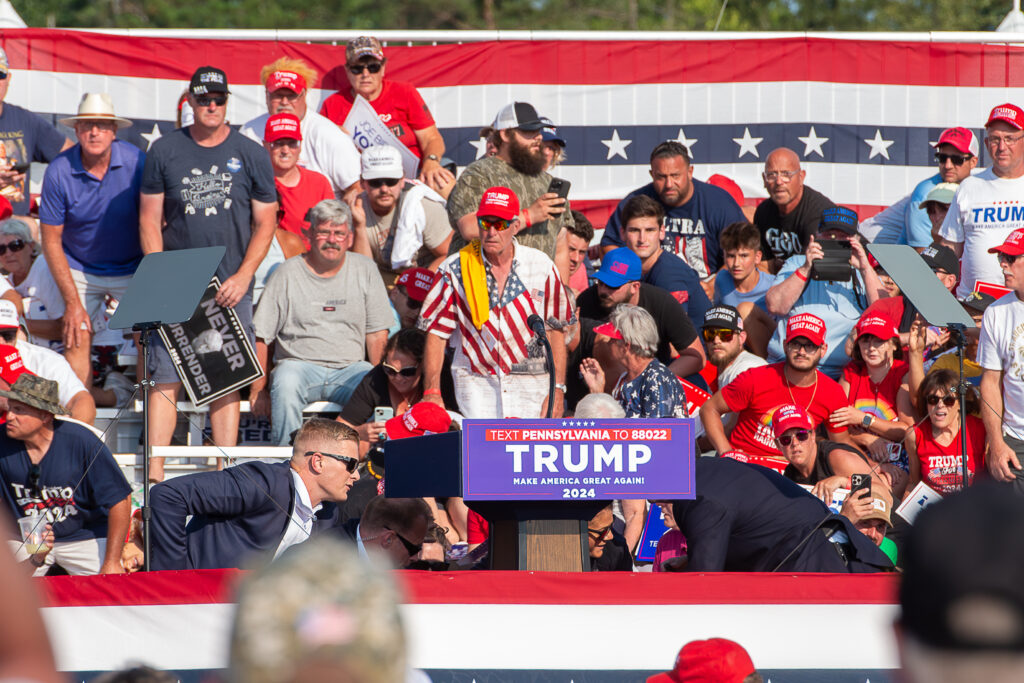
The rally was scheduled to begin at 5 p.m., but Trump did not speak until 6 p.m.
When former president Trump finally took the stage, he began speaking about immigration. First he referred to a display on a large video screen on his left. Then he turned to refer to information on a screen to his right, LoVuolo said.
“Then, all of a sudden, I heard four pops. … It’s amazing how quickly your mind thinks. In a split second, running through my mind first, ‘Is that firecrackers? No, wait a second. I think that was a gunshot,’” LoVuolo said. “By the third or fourth pop, I just hit the ground.”
Confusion ensued. LoVuolo wasn’t sure who the gunman was firing at, so, he crawled to a section between the sound tent and the media platform.
“I felt that I was safe because I knew the sound of the gunshots were coming from my left,” he said.
An enormous number of thoughts were streaming through his mind within about 45 seconds after he heard the pops, he said.
LoVuolo knew his wife was watching the rally on TV at home. Somehow, within seconds, he managed to text her to let her know he was “ok,” he said. Then he sprang into action.
“‘You’ve got to be photographing this,’” he said to himself. “‘You have to do a job,’ … My mind was thinking, ‘This is history in the making.’ It’s not good history, but it’s history in the making. I just got up and started taking pictures,” he said.
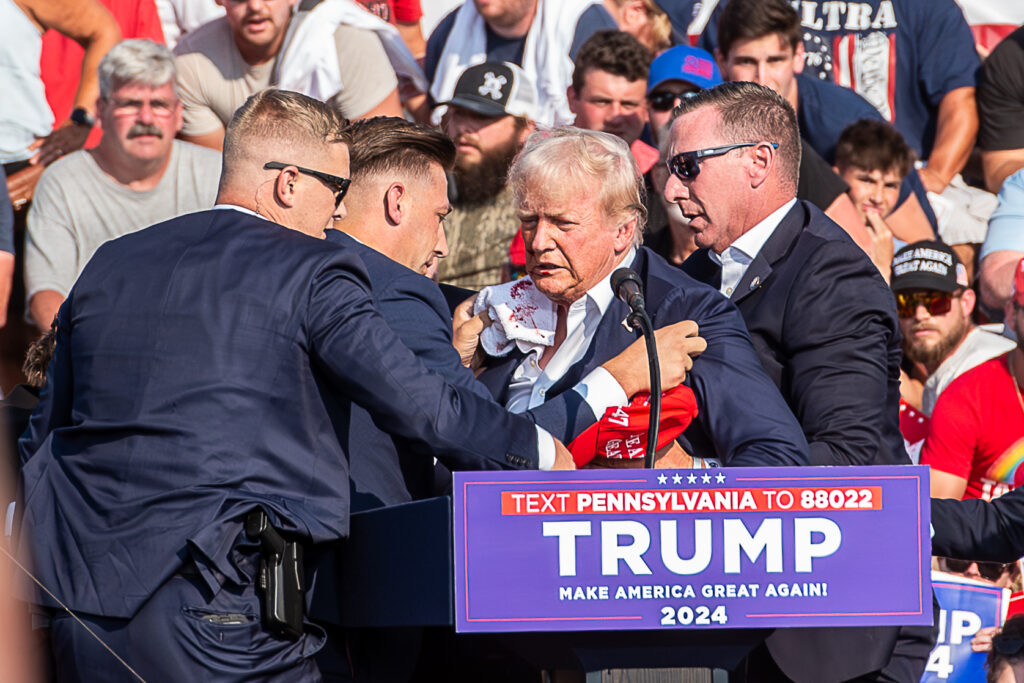
“As you can see from my pictures, the Secret Service, they got to Trump. As I remember, five Secret Service agents were on top of him. Then, all of a sudden you hear, ‘ Shooter down.’ We could hear this because the mic was still live,” LoVuolo said.
The alleged shooter, perched on a nearby rooftop, was neutralized by Secret Service snipers withing seconds of the first shots. He was identified as Thomas Matthew Crooks, 20.
A handful of Secret Service agents surrounded Trump. Their job was to protect the former president and get him out of there, LoVuolo said.
“They’re heroes in my eyes,” he said. “Those are people who get paid to take a bullet for their protectee.”
Then, the Secret Service helped him up and rushed him off stage.
“As they’re whisking him off stage, he does the fist pump … and the crowd just starts cheering. They start chanting “‘USA,’” LoVuolo said. “Then, quickly, the mood of the crowd changes because they realize that people got hit. Then you start hearing screams for a doctor, a medic and ‘help somebody’s been shot.’ And the crowd just completely changed.”
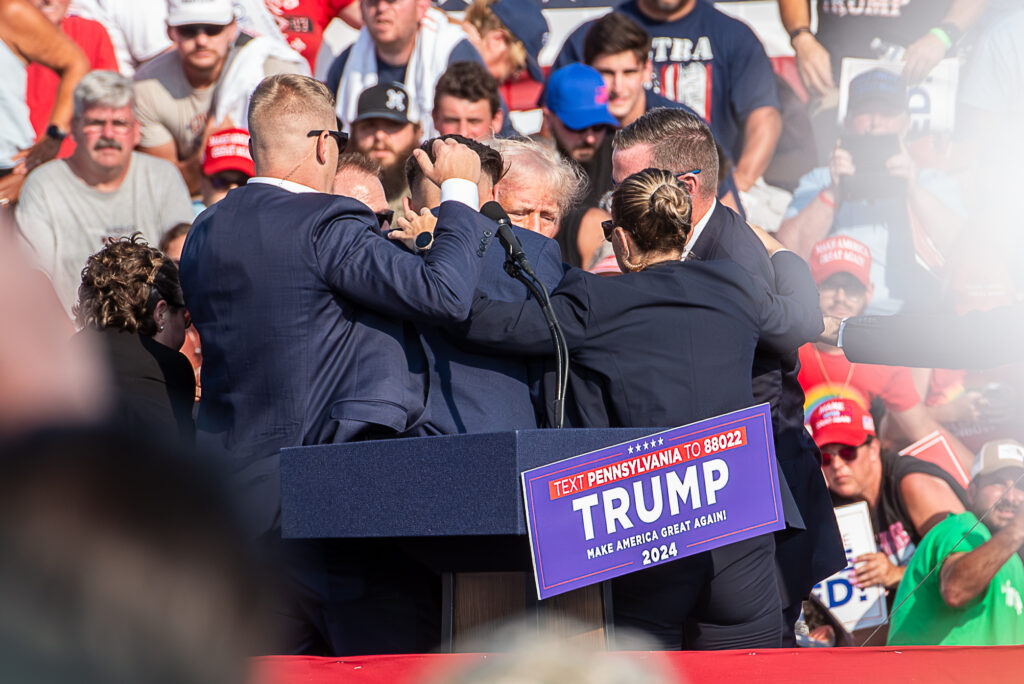
LoVuolo and other members of the media were perplexed because the crowd had not rushed out of the area in spite of the danger. But there was still much uncertainty about what exactly happened at that point. Things changed dramatically as everyone realized people had been wounded.
“The mood of the crowd – those chants just all stopped and there were cries for help,” LoVuolo explained. “Then, quickly, people started to leave the grandstands.”
Members of the media were also confused about what exactly took place at that point, but they realized they had a responsibility to cover the event, LoVuolo said.
He pulled up photos on his camera and quickly realized it was gunshots because he saw blood in the images. Candidate Trump had been wounded in his right ear. Then reality hit even harder as LoVuolo witnessed a Life Flight helicopter descend near the area to transport a shooting victim.
LoVuolo took photos of the grandstand – photos he chose not to share with anyone because they showed the blood of deceased victim Corey Comperatore, 57. Two others were wounded in the shooting, but have since been released from the hospital: David Dutch, 57, and James Copenhaver, 74.
“Then, the Secret Service said, ‘Media, you all have to get out of here. This is now a crime scene.’ This just changes everything that you’re thinking,” he said. “My anxiety was high. My heart rate was racing.”
LoVuolo remembers speaking to several other media members after the shooting. Their anxiety and adrenaline levels were high.
“I know we were speaking English to each other, but now that I play it back in my head, I can’t remember what we were saying to each other,” he said.
Members of the media were stuck in the parking lot for about four hours, LoVuolo said. He recalls reporters interviewing people in the parking area as they left. He finally returned to his home at about 11 p.m.
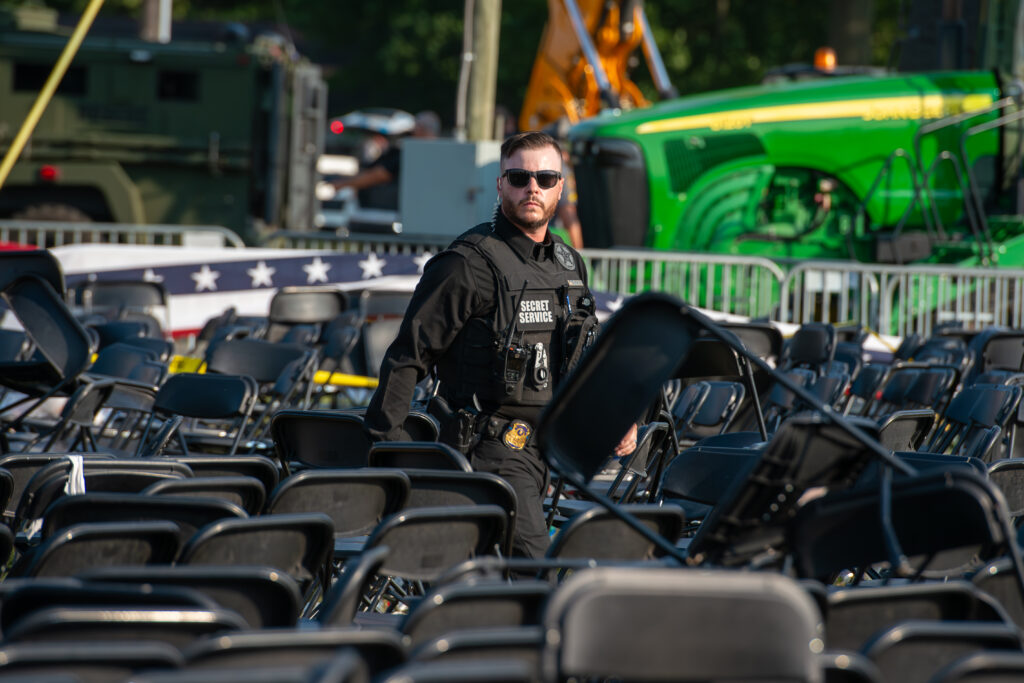
“As soon as I got home, I hugged my wife, hugged my daughter. I’m safe. I’m ok.,” he said. “My wife says to me, ‘Okay, no more political rallies. Let’s just stick to sports.”
Then LoVuolo went through his many photos from the historic event. His photos captured a bloodied and disheveled Trump, the Secret Service in action and some audience members in groups praying for the victims in the aftermath. One of them was published as the main cover photo of a special edition of the Butler Eagle on July 15.
“It was part of history that I never thought I would be a part of, and that I never want to be a part of again,” LoVuolo said.
Visit ralphlovuolophotography.com.

